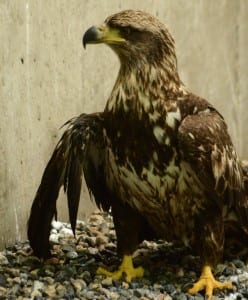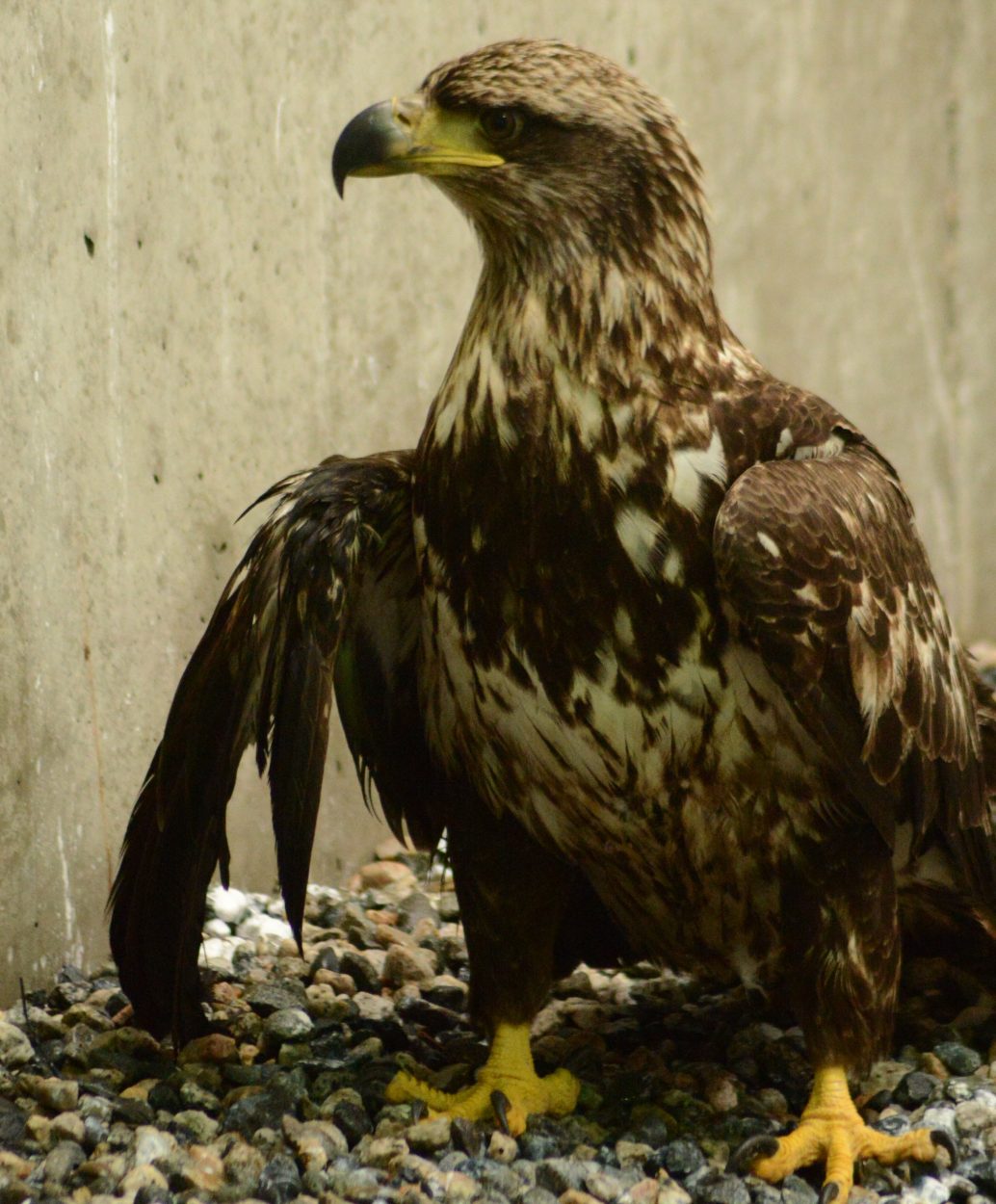A bald eagle that was rescued from a beach in Petersburg last month was euthanized at the Alaska Raptor Center in Sitka earlier this week.
The eagle had been at the raptor center for about five weeks, recovering from an injury to the tip of its wing. The eagle was rescued last month by a Petersburg visitor and local officials, and it arrived at the center with a broken allulah bone in its wing, making it unable to fly. 
Staff performed surgery on the bird and gave it antibiotics for about ten days before moving it into the center’s larger flight area. However, after spending a few weeks there, staff began to realize that something more serious was wrong.
“We kind of suspected that he might have been an electrocution,” said Jennifer Cedarleaf, the avian rehabilitation coordinator for the center. “It takes about three to four weeks to really see the full results of an electrocution. And that’s pretty much it. He was in there five weeks, and they were cleaning him there and noticed part of a wing with bone on it laying on the ground. And we figured it was probably from him, so we picked him up, and the bone from his wing had started to die from the electrocution and had broken off.”
Cedarleaf added that electrocutions can almost cook a wing or talon can get almost cooked if a bird is exposed for too long. In Southeast Alaska, electrocutions are relatively common due to dense eagle populations close to power lines in coastal areas like Petersburg.
“We see quite a few. Most of them are birds that we pick up as DOA’s, they hit the line and get electrocuted so badly that they die instantly. And then we see other ones, we’ve seen it in pretty much every species of bird that we deal with, I think we’ve seen an electrocution in.”
In the past, Petersburg has spent money to eagle-proof their power lines and prevent electrocutions. Cedarleaf says that the eagle from Petersburg will be sent to the National Eagle Repository in Colorado for conservation and use in Native American traditions.










